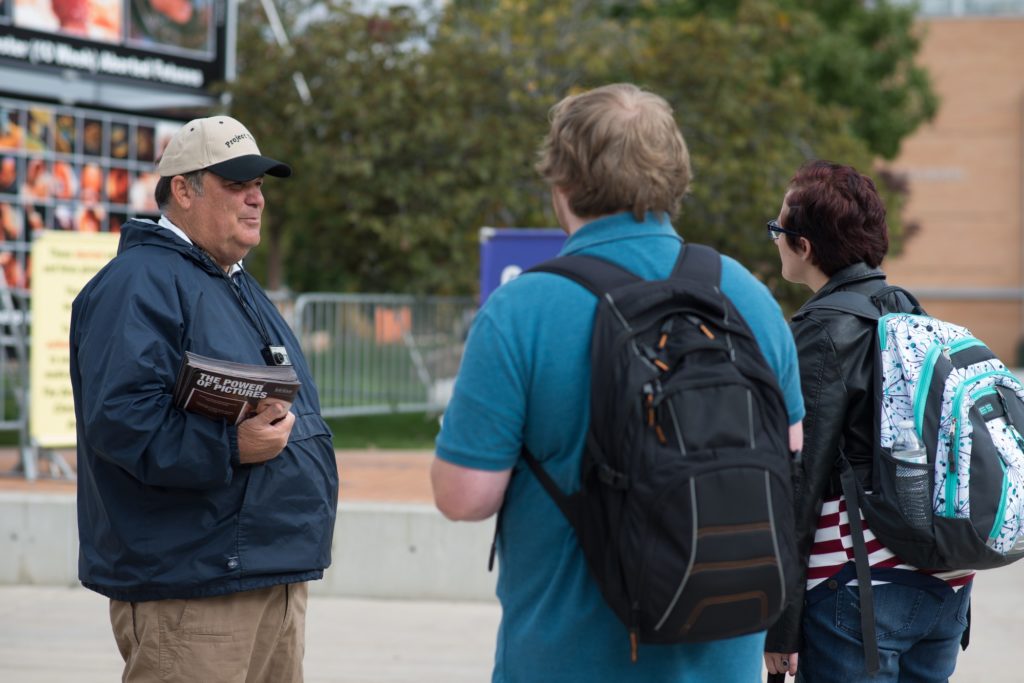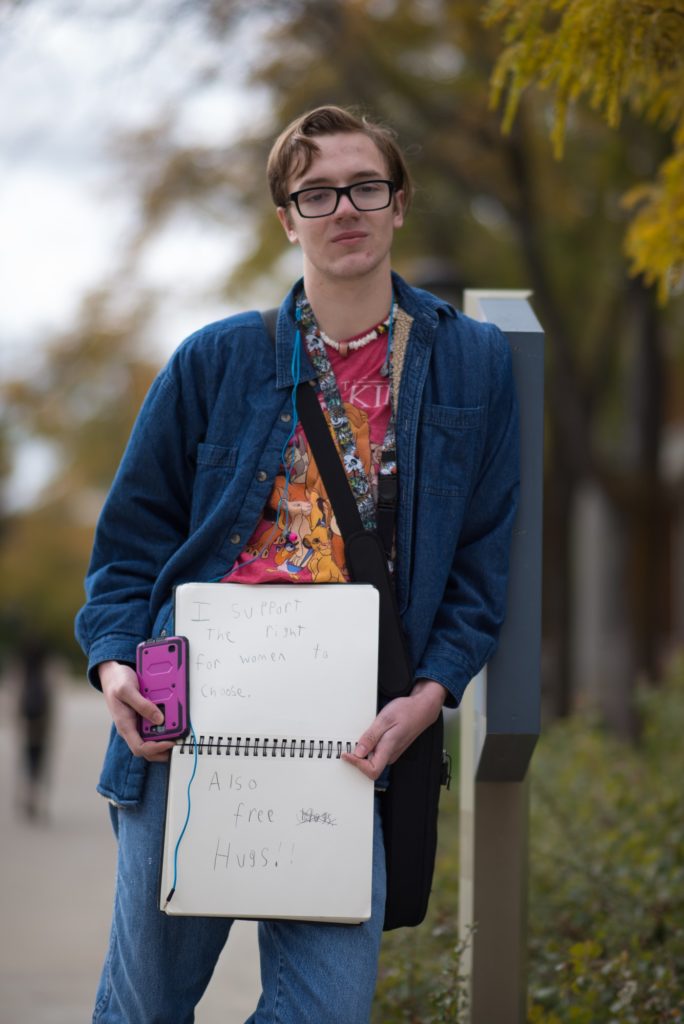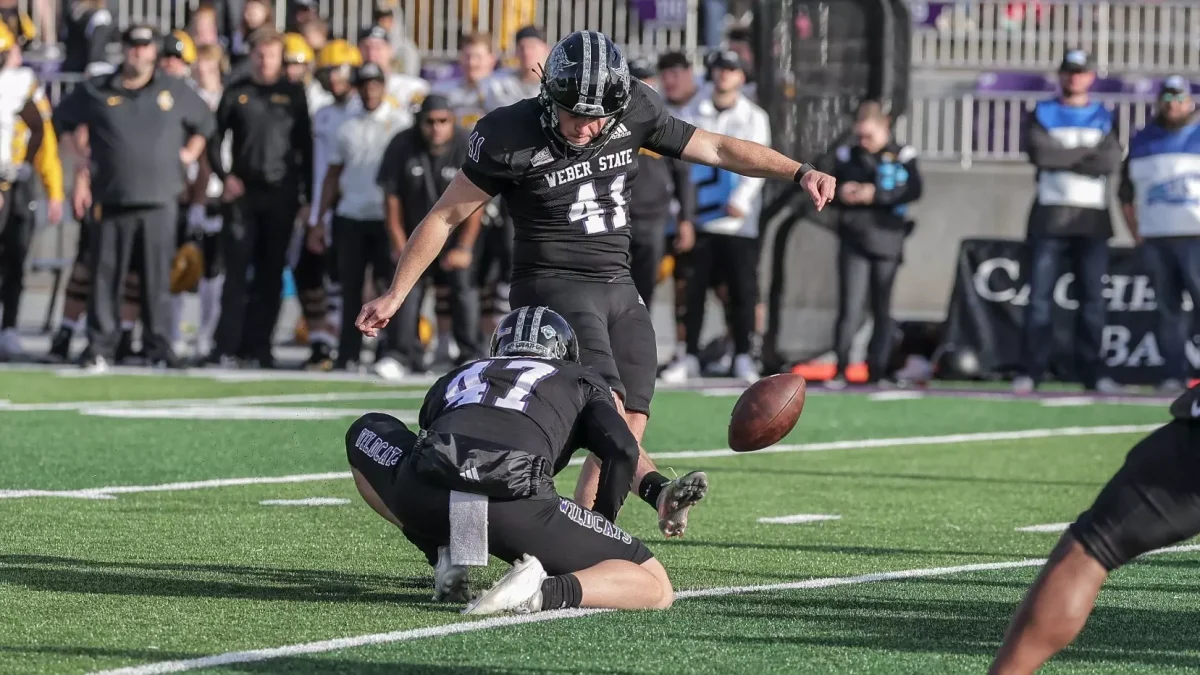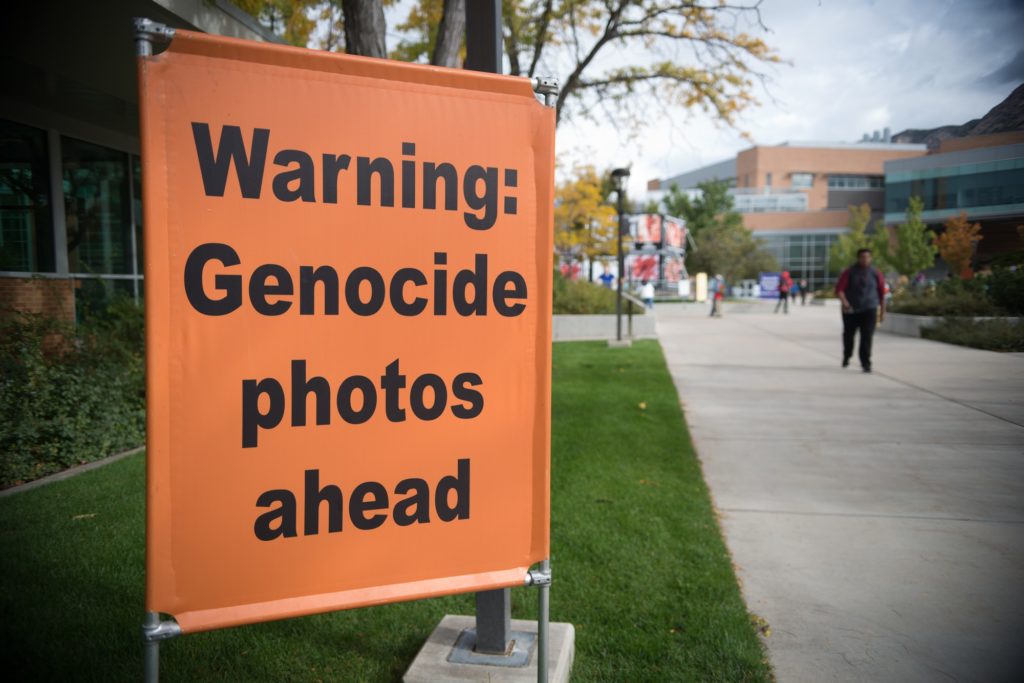
The Center for Bio-Ethical Reform (CBR) reserved a public space at the Stewart Bell Tower Plaza for their Genocide Awareness Project (GAP) mobile display to students Oct. 2–3.
On Oct. 2, a group of students organized next to the plaza with signs to protest the Genocide Awareness Project and promised they would continue until the next day when the reservation of the plaza ended.
The Genocide Awareness Project is a pro-life advocacy group that compares abortion to genocide events such as the Holocaust and genocides that took place in Cambodia and Rwanda on their display.
CBR Project Director Jacqueline Hawkins defined genocide according to Webster’s New World Encyclopedia, Prentice Hall General 1992 edition: “The deliberate and systematic destruction of a national, racial, religious, political, cultural, ethnic or other group defined by the exterminators as undesirable.”
According to Hawkins, these same definitions of genocide also apply to abortions, especially among minority communities and those diagnosed as disabled or female before birth.
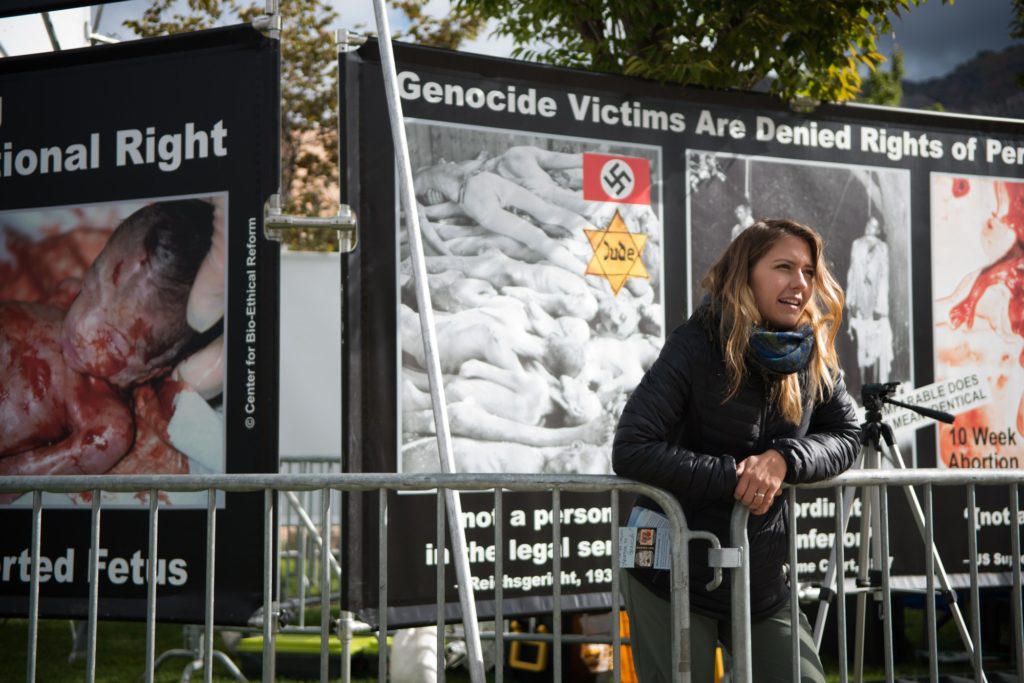
Interim Vice President for Student Affairs Brett Perozzi allowed GAP to reserve public space on campus for informative discourse among the student public. To him, Weber State University fosters a safe and respectful campus environment where all can assemble and address important issues.
“The process for reserving space is the same for every group, regardless of the content of their speech,” Perozzi said.
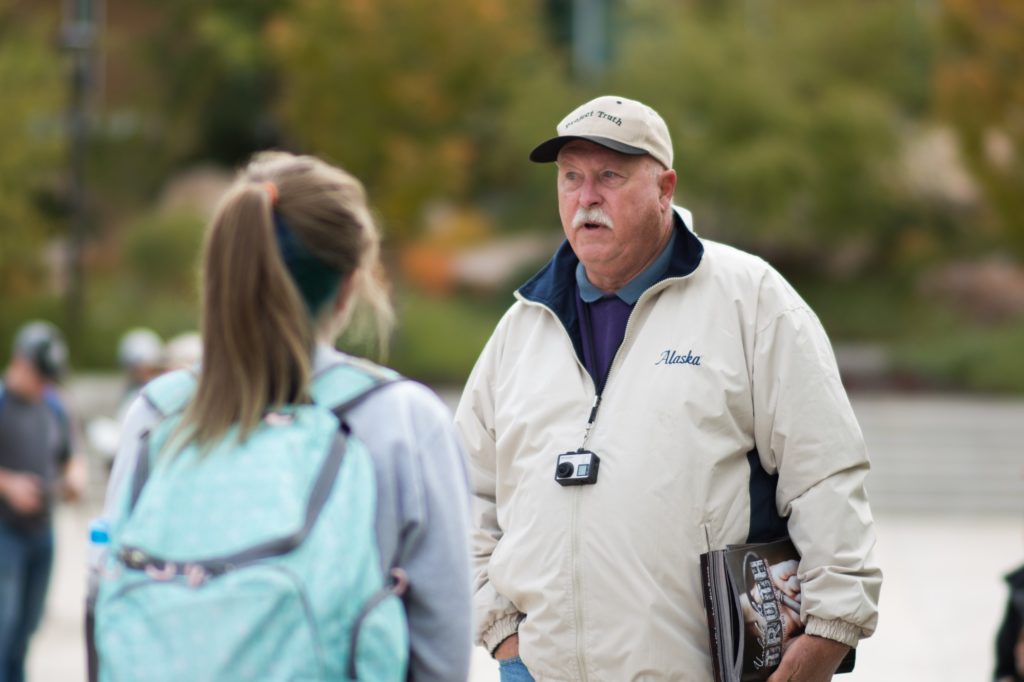
Student Kayla Summers, one of the protesters, said she was aware of the project and wanted to organize a demonstration.
“A lot of the people who I saw protesting later that day were not aware they were going to be there, so they kind of did it on the spot. It was really impromptu,” Summers said.
Summers wanted to protest because she believes comparing historic genocide to abortion would hurt students the project may be directed toward.
“There are undoubtedly women on campus who have had miscarriages, and I feel like that’s harmful to them,” Summers said.
Hawkins commended the protestors for their civility and respectfulness to those they chose to protest.
“They were very polite. I would say in the three years that I’ve done that these are the best protestors that I’ve seen,” Hawkins said.
